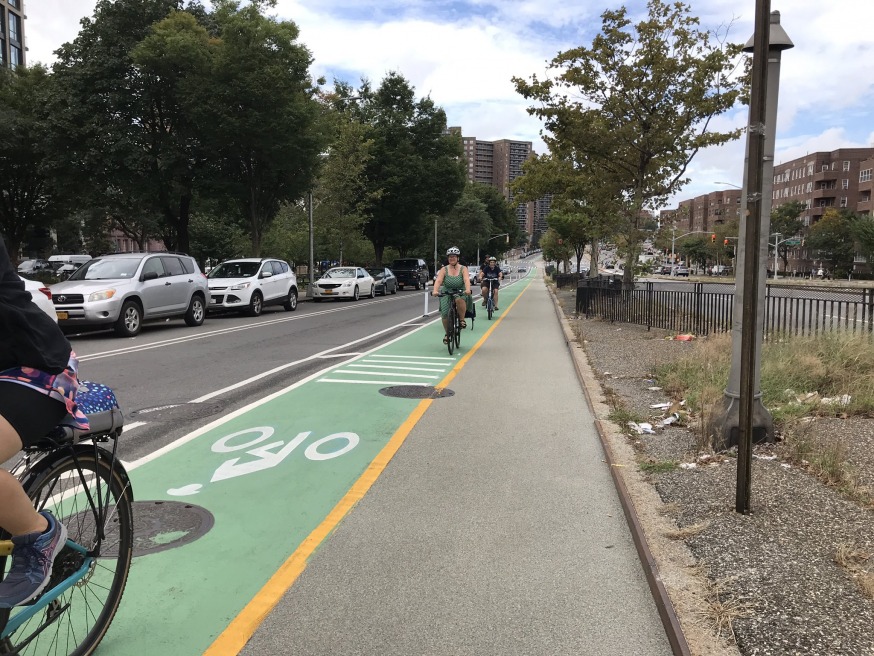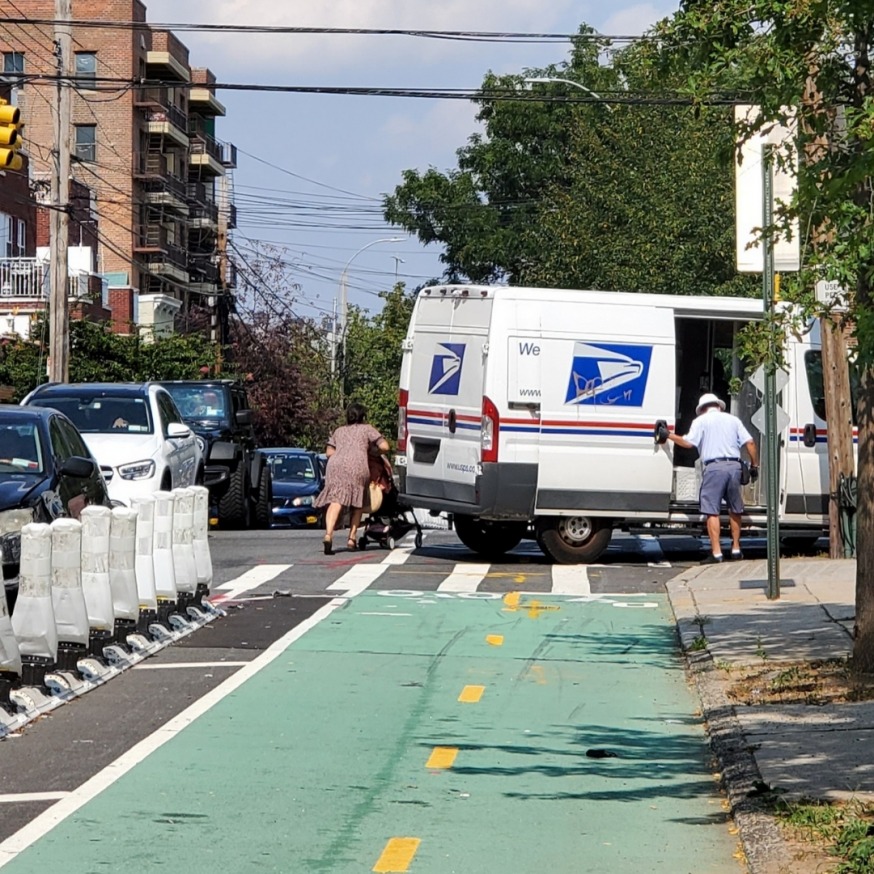
The protected bike lane on Queens Boulevard, between Yellowstone Boulevard and 73rd Street, in Forest Hills. The plastic bollards will soon be replaced by cement barrier (Photo: DOT)
Feb. 22, 2022 By Allie Griffin
Three protected bike lanes in Queens will be getting safety upgrades as part of an effort to better protect cyclists from cars throughout the city, the Department of Transportation announced Friday.
Bike lanes in Long Island City, Astoria and Forest Hills will be among the first lanes in the city to have their plastic bollards replaced with cement barriers through the initiative. Four Manhattan bike lanes are also scheduled for the first updates.
The three Queens lanes that will be hardened are Crescent Street from Queens Plaza North to Hoyt Avenue North in Long Island City and Astoria; Vernon Boulevard from 46th Avenue to 30th Road in Long Island City and Astoria; and Queens Boulevard from 73rd Street to Yellowstone Boulevard in Forest Hills.
The three Queens and four Manhattan protected bike lanes are the first lanes in the program. The DOT plans to harden a total 20 miles of the 40 existing miles of delineator-protected bike lanes in the city by the end of 2023. Existing plastic bollards currently separating bike lanes from car lanes will be removed and replaced with cement Jersey barriers that weigh several tons.
“New York City’s cyclists deserve to be safe everywhere, but especially in protected lanes – where drivers will too often disrespect and block that critical space,” DOT Commissioner Ydanis Rodriguez said in a statement. “We have an actionable, concrete plan to protect cyclists and we are going to deliver on this work to keep our lanes clear.”
He thanked cycling and transportation advocates for helping identify the bike lanes in greatest need of better protection. The DOT chose lanes with high ridership, a history of cars blocking the bike lanes and/or lanes adjacent to heavy car traffic for the initiative.

The Crescent Street bike lane is one of three Queens protected bike lanes that will soon get new cement barriers. In this photo a USPS van is blocking the lane (twitter)
Queens Borough President Donovan Richards said the effort is a great step toward improving cyclists’ safety in the city.
“These enhanced safety measures will provide bicyclists with the solid protection they deserve and will help unclog our roads and reduce pollution by encouraging more people to travel by bicycle,” Richards said in a statement. “I look forward to seeing the hardening of the bike lines at three high-volume locations in Queens in the coming weeks.”
Queens Assembly Member Andrew Hevesi also applauded the DOT’s plan, noting its need in his district that covers Forest Hills.
“I am glad to hear that hardened protected bike lanes are finally coming to Queens Boulevard!” Hevesi said. “New Yorkers deserve safe streets in which they can traverse without fear of needless tragedy.”
The effort coincides with the department’s commitment to build new protected bike lanes throughout the city. The DOT is testing several alternatives to plastic bollards for future lanes, including rubber and concrete barriers as well as curb designs that separate bike lanes from car lanes without requiring large-scale installations.
Queens Council Member Shekar Krishnan and Transportation Alternatives Executive Director Danny Harris both said the new protection features will save lives.

DOT crews installing new cement barriers along a protected bike lane in Manhattan (DOT)
“New Yorkers are walking more and bike ridership has increased in recent years, and our city needs to be more accessible and safer for those not behind the wheel,” Krishnan said. “We must improve our infrastructure to protect bikers and pedestrians across the Five Boroughs.”
Harris said the cement barriers offer actual protection that is sorely needed for the city’s cyclists.
“Real protection, not just plastic or paint, is needed to keep people riding bikes safe,” he said in a statement Friday. “Today’s announcement by Commissioner Rodriguez to upgrade 20 miles of plastic-marked bike lanes will save lives,”
One Comment

In Queens, these “bike lanes” are used more by delivery people on motorized bicycles and scooters that remain unregulated. Along Queens Boulevard, placing static barriers will hinder traffic and cause potential delays for city buses and/or emergency vehicles. Maybe some of the money used for this could be spent on repairing existing infrastructure or the subway system. Seems somewhat misguided.